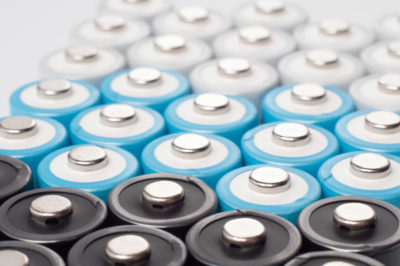What type of electrochemistry in a battery should be used?

1859, it is the beginning of energy systems, and the creation of the first lead-acid battery by Gaston Plante. Later reused in the automotive industry, lead-acid allowed the technologies of batteries to expand with nickel, then lithium, and now sodium.
Each technology has its own properties and can be used for various applications depending on various factors, such as the power and the desired lifetime, but also the climate, the weight on board, etc…
The history of electrochemistry
- Lead-acid: Lead-acid and its derivatives (lead-gel) was the first battery technology and is still widely used in the automotive and industrial sectors. The reason? It is economical, its power is correct, it is easily available and usable. Its disadvantages are a rather short lifetime and it is polluting. Lead batteries are quite heavy and have a memory effect. Therefore, they should not be discharged too much (no more than 30% of their total capacity), for fear of reducing their capacity and lifetime.
- Nickel Cadmium (NiCd): 2 times lighter than lead-acid, this technology is also economical. Flexible in terms of format, it has a longer lifeime. However, when not in use, NiCd batteries tend to discharge easily and remain very polluting.
- Nickel Metal Hydride (Ni-MH): As light as NiCd, this technology has become essential for outdoor solar applications and is increasingly used for solar lighting in hot countries. It is known for its good temperature resistance, safety and ease of transport. Much less polluting than NiCd, it is easily discharged in storage.
Lithium electrochemistry in a battery
In general, lithium is better optimized in terms of energy and power than the historical electrochemical processes mentioned above.
Lithium is revolutionizing electromobility and embedded energy storage, from electric scooters to electric cars or small electronic devices such as mobile phones. Stationary energy storage is also in the development phase as the cost of energy is rising and the widespread use of lithium makes it possible to achieve very competitive prices for the user.
There are many Lithium technologies: NMC, LiPo, LFP, NCA, LMO, LTO, etc. Each one has its advantages and disadvantages.
What will the electrochemistry in a battery of tomorrow be?
- Sodium ion: More and more studied, this technology has the advantage of being more economical than lithium, more durable and just as powerful. Certain obstacles still need to be improved, such as its endurance and energy density.
- Vanadium: Known since the 1980s, vanadium-based technology has the advantages of being powerful with good durability and format flexibility. This technology is nevertheless very complex to master and still too corrosive to be used in the same way as lithium.
- Others: Other technologies are still under development such as Quinone, an improved form of vanadium which eliminates these corrosion problems. There is also Sodium Nickel Chloride, which is powerful but complex to manage and control. There is also graphene, which is promising in terms of performance, durability and safety.
| Lead acid | |||||||
| NiCd | |||||||
| Ni-MH | |||||||
| NMC | |||||||
| Sodium-ion | |||||||
| Vanadium | |||||||
| Graphene |
In short, there are many battery technologies. All of them have advantages and disadvantages, and therefore their preferred fields of application. Electrochemical research is underway to combine lifetime, performance and safety. For the moment, even the most efficient electrochemical systems need to be made safe through the use of a BMS (Battery Management System).
At BMS PowerSafe®, we have been striving for 20 years to customize our BMS according to your choice of cell technology and with an emphasis on safety and performance.
